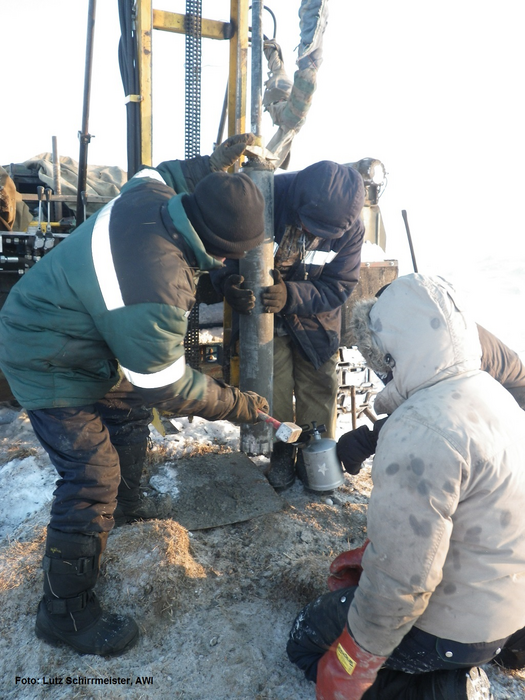About a quarter of the organic carbon contained in ice-rich Arctic permafrost is more difficult for microorganisms to utilize. The reason for this is a strong binding of the organic material originating from dead plant remains to mineral soil particles. That is the result of a study conducted by a research group led by Professor Dr Janet Rethemeyer and Dr Jannik Martens at the University of Cologne’s Institute of Geology and Mineralogy. Accurate predictions of the release of greenhouse gases from permafrost deposits are therefore more complex than previously assumed.

Credit: Lutz Schirrmeister, Alfred Wegener Institute
About a quarter of the organic carbon contained in ice-rich Arctic permafrost is more difficult for microorganisms to utilize. The reason for this is a strong binding of the organic material originating from dead plant remains to mineral soil particles. That is the result of a study conducted by a research group led by Professor Dr Janet Rethemeyer and Dr Jannik Martens at the University of Cologne’s Institute of Geology and Mineralogy. Accurate predictions of the release of greenhouse gases from permafrost deposits are therefore more complex than previously assumed.
The results of the joint project, which was funded by the German Federal Ministry of Education and Research (BMBF), are published in the article ‘Stabilization of mineral-associated organic carbon in Pleistocene permafrost’ in the journal Nature Communications.
The Arctic is warming dramatically fast compared to other parts of the world. Much of it is covered by permafrost and contains large amounts of carbon, almost twice as much as the atmosphere. This carbon comes from plants that have grown over thousands of years, decomposed in the soil and then become ‘frozen’. Due to strongly rising temperatures in the Arctic, this gigantic freezer is thawing fast. The old carbon stored in it can now be degraded by microorganisms, releasing carbon dioxide and methane into the atmosphere. These greenhouse gases accelerate global warming. The warmer it gets, the more greenhouse gases are in turn released from the permafrost, causing temperatures to rise further and frozen soils and sediments to thaw even faster. “There is a feedback of carbon in permafrost with climate, the strength of which depends largely on those factors that influence microbial degradation,” said Janet Rethemeyer.
In the joint research project, scientists from the Institute of Zoology at the University of Cologne, the University of Tübingen, the Technical University of Munich and the Alfred-Wegener-Institute in Potsdam studied long permafrost cores from the Siberian Arctic. The cores come from very ice-rich, fine-grained sediments – similar to loess in our latitudes – that were deposited in large areas of Siberia and Alaska during the last ice age. The cores, up to 12 metres long, comprise sediments deposited over a period of up to 55,000 years.
The analyses of the permafrost cores show that a significant part (25-35 %) of the carbon is associated with the mineral particles and thus more difficult to access for microorganisms. “Predictions of interactions between thawing permafrost and climate are very complicated because the microbial degradability of the organic material in the sediments has varied greatly over the last 55,000 years. This is due to the different climatic conditions during this long period of deposition,” Janet Rethemeyer explained. Warmer and wetter conditions resulted in poorer binding of carbon to the mineral particles, while a colder and drier climate led to stronger binding, primarily to iron oxides. Stronger binding to iron oxides means that the decomposition rates of old plant material are lower, as Professor Dr. Michael Bonkowski from the Institute of Zoology, Department of Terrestrial Ecology at the University of Cologne has shown in laboratory experiments.
“These new findings can make a significant contribution to making computer models for forecasting greenhouse gas emissions from thawing permafrost more reliable,” said Jannik Martens, who is currently conducting research at Columbia University in New York.
Journal
Nature Communications
DOI
10.1038/s41467-023-37766-5
Method of Research
Experimental study
Subject of Research
Not applicable
Article Title
Stabilization of mineral-associated organic carbon in Pleistocene permafrost
Article Publication Date
13-Apr-2023




